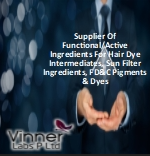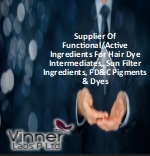Choosing the right sun filter is important, especially if you’re planning to visit the beach or engage in any activity that would expose you to sunlight for long periods. As you likely know, sunscreens play a crucial role in protecting us against harmful UV radiation, which can potentially result in skin cancer. However, it’s easier said than done, since there are too many sun filters in the market and not all of them are equally good. When shopping for a sunscreen product, it’s necessary to check out the active ingredients. It’s the active ingredients that help the sun filters serve most of their purpose, and therefore determine their quality.
5 good active filters to look out for
There’s more to a sunscreen ingredient than just its effectiveness at blocking UV rays. Remember, you’ll be wearing sunscreen on your skin for extended periods. The active filters should be safe for your skin too. Here are 5 active filters that are good to have in sunscreen:
Zinc oxide
You’ll often find zinc oxide as a material in physical sunscreens. Allowed up to concentrations of 25%, it’s safe to use and doesn’t penetrate the skin. Zinc oxide is very effective against sun damage, and even individuals with sensitive skin can use sun filters with this active ingredient safely. However, it’s not that good at preventing sunburns and can’t match the effectiveness of chemical sunscreen ingredients.
Titanium dioxide
Also used in other products like SPF makeup, whitening products, lotions, and pressed powders, titanium dioxide is one of the safest ingredients. Children above the age of six can use titanium dioxide-based sun filters too. However, while this ingredient is effective at blocking a broad spectrum of UV rays, it can’t block the long UVA1 rays. When used on dark skin, the formulas can sometimes leave a white cast.
Octinoxate
This is one of the most effective UVB absorbers out there and does a great job of preventing sun damage. Sun filters may use Octinoxate together with avobenzone to provide enhanced sunburn and aging protection. Octinoxate is a commonly used ingredient, which means you’ll find it in a lot of sun filters.
Tinosorb S and M
Tinosorb S and M are good chemical sun filter ingredients too, though the former is particularly more popular. It offers protection against UVA and UVB rays of both short and long wavelengths, which ensures comprehensive protection against sun damage. Besides, it also helps stabilize other ingredients in a sun filter.
Mexoryl SX
Many places like Hawaii, Japan, Palau, etc. enforce bans or restrictions on the usage of certain sun filter ingredients for the threat they pose to marine life in coral reefs. Mexoryl SX is an effective and coral-safe ingredient, particularly at blocking the UVA1 rays responsible for skin aging. It’s approved across several countries with strict quality standards and is safe for children above the age of six years.
Conclusion
As long as your sun filter contains one or more of the above ingredients, it’s possibly a good one. Try to avoid sunscreens that contain Trolamine salicylate or Aminobenzoic acid. Apart from active ingredients, you also need to consider the brand’s reputation and refer to online reviews.


